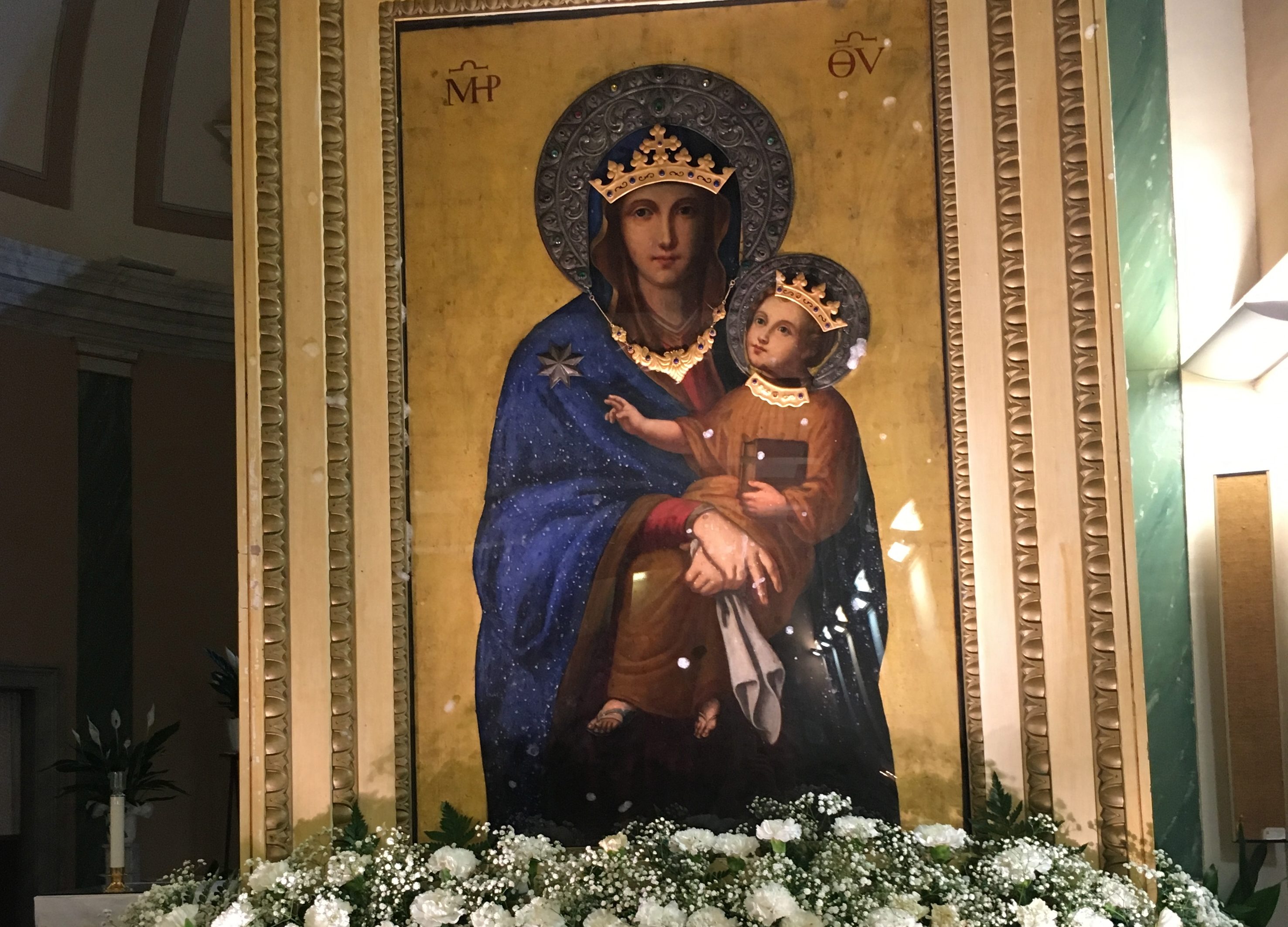We are close to the August 5, the day when the Rocca Priora inhabitants take to the streets to celebrate Our Lady of Snow waiting, after Mass and the solemn procession, for the miracle of snow in summer to happen again.
The miracle does and it is a copious amount of artificial snow that transforms the main street of the town into a white carpet, a tribute to the snow that was for centuries the economic engine of Rocca Priora. It was one of the most anticipated holidays of this mountain town and Rome.
The history of the festival has been told in the words of Luciana Vinci, an incredible woman, journalist and who carries a historical memory of a community that since the end of the ‘snow business’ has not had any other identity so strong.
We try to understand what was the business of snow in Rocca Priora that was so important as to put the town under the direct control of the Papal States. If Rocca Priora has not had the Renaissance, and the villas that characterize the other towns of the Castelli Romani, it is just because of the snow. There were no refrigerators and the snow was essential for the preservation of food and for medicine.
The Industry of Snow
This is the special microclimate of heavy snowfall abounding in Rocca Priora door, and the idea to keep it in the 'ice wells' and to transport it through the night to the capital. The Apostolic Chamber understood the strategic importance of this business and took under its control the town and the ‘White Gold’ contract entrusting it only to its most trusted ministers.
At Rocca Priora snow was a real strategic industry regulated by special laws and edicts that organized its collection, custody and the protection of the ice wells. For example, after a snowfall the taverns were given 5 'scudi' to stay closed for the collection days so that people were not distracted by wine and would work longer hours. In a short time they had to disperse all the snow into wells and compact each well. More snow in the pits meant more money for everyone!
Transportation to Rome, then, was accomplished by a "Special wagon", a Barozze drawn by oxen, free from all controls (otherwise ice could melt), so often with the ice arms were smuggled along the ancient Via Latina. We still know some names of oxen pair: Fiordispina-Bianci, Sergente-Tamburrino, Albanese-Frascatano, according to the custom throughout Roccapriorese to assign special names to people and animals!
When the day of the snowstorm came, and the bells rang, men, women, children, soldiers and priests began collecting. All were well paid and in the archive of Rocca Priora are documented 30 ‘bajocchi’ per day for priests, guards (nevaroli), responsible for the collection, for the control of the wells, for the snow placement in the wells and for carriers who deliver the "goods". Women and children however, received only 10 bajocchi
But what happened to the 'wells of snow (ice)’? Do they still exist?
After collection, the snow was piled up and arranged in large holes in the ground in the shape of inverted pyramids. It was taken to the bottom down stairs dug into the ground. The snow was arranged in layers that were pressed, and turned it into ice, and then separated by layers of insulating straw and earth that maintained the cold.
At Rocca Priora they know of three ‘pozzi’: Pozzo Stella and Pozzo Nuovo containing about 460 Barozze (6250 quintali of snow – or 625 tonnes) while a third smaller pit has not been located.
The last day of harvest is celebrated. The people went to the "sound of fifes and drums" to the small Chapel of Our Lady of Snow (built by the Savelli family for devotion) to give thanks for the heavy snowfalls that have brought jobs and income to the whole country. The history of the town is represented by the picture by Curzio Pagliari of the snowy country that recollects the population collecting the "white harvest".
The "beautiful story" stopped with the end of the snow trade arising from the invention of artificial ice-making, but in Rocca Priora there is still a party.
And what is the connection with the snowfall in Rome in Santa Maria Maggiore?
An unusual snowfall on August 5, 352 in Rome whitewashed the Esquiline hill and Pope Liberius traced in the snow the perimeter of the new basilica dedicated to Our Lady of Snow. In Santa Maria Maggiore is the grave of the Savelli family, lords of Rocca Priora from whose devotion church of the same name was built in Rocca Priora.
And this is why we chose August 5 to celebrate Our Lady of Snow in Rocca Priora.








Follow us